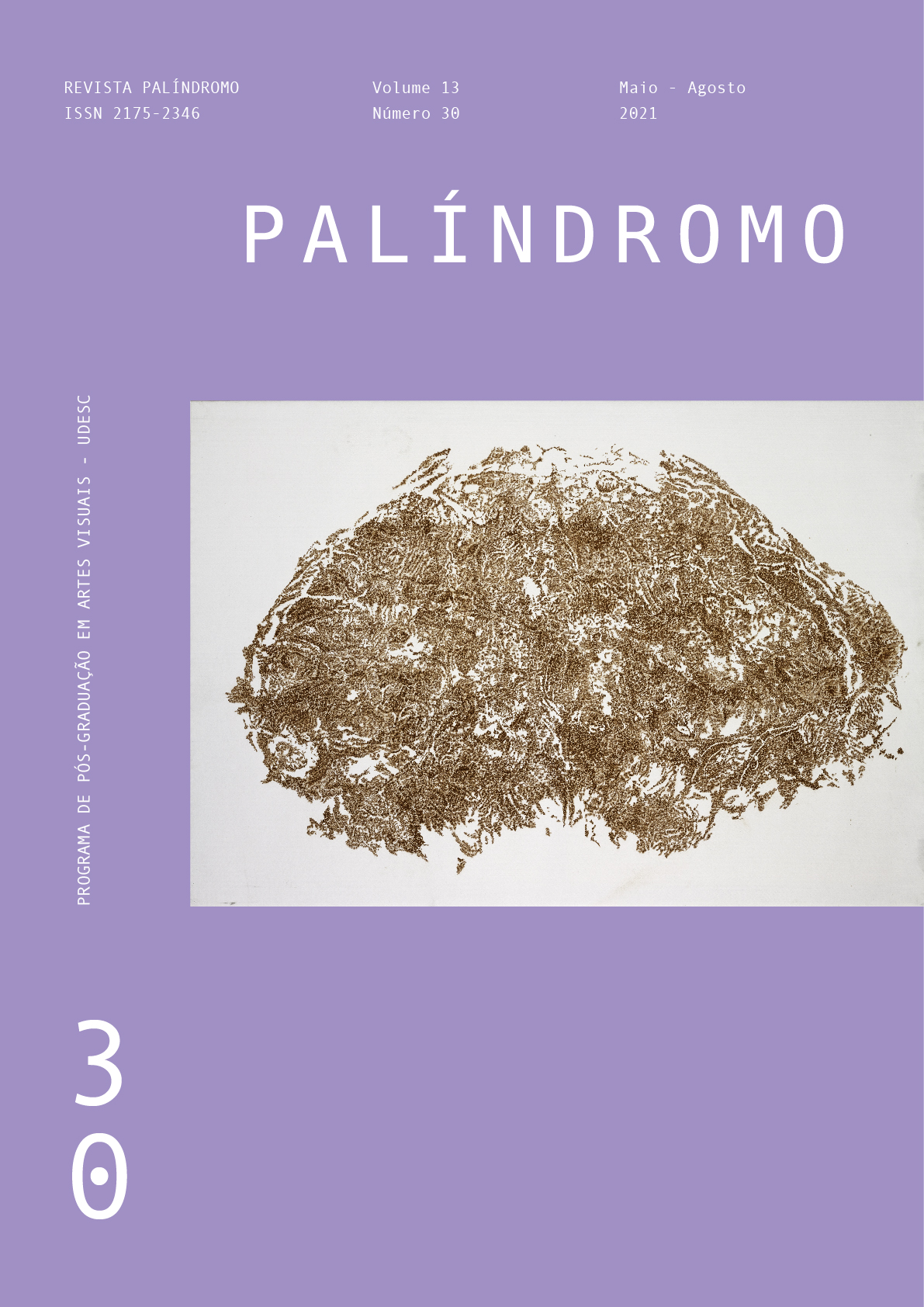The Double-Distance of the educator
DOI:
https://doi.org/10.5965/2175234613302021184Keywords:
Aesthetic education, Open epistemology, Radical naturalism, Double-distanceAbstract
What motivations and problems arise in the pedagogical practice that trains architects for the future? The article develops a thematic, epistemological and moral approach to analyze the foundations and the repercussions of an aesthetic education project based on an open and experimental episteme guided by a notion of radical naturalism. The need for an amalgam between an ecological conscience and a spiritual conscience is outlined for a full and integral widening of the students' perception.
Downloads
References
ABRAHAM, A.. The neuroscience of creativity. Cambridge, UK: Cambridge University Press, 2019.
BRANDT, A.; EAGLEMAN, D.. The runaway species: how human creativity remakes the world. New York: Catapult, 2017.
BERGSON, Henri. Matéria e memória: ensaio sobre a relação do corpo com o espírito. Tradução de Paulo Neves. São Paulo: Martins Fontes, 1990.
CAPRA, F.; LUISI, P.L.,. A visão sistêmica da vida. Tradução: Mayra Teruya Eichemberg e Newton Roberval Eichemberg.São Paulo: CULTRIX, 2014.
COOK, P. Experimental Architecture. 1a ed. New York: Universe Books, 1970.
CSIKSZENTMIHALYI, M. Creativity: the psychology of discovery and invention. New York: HarperPerennial, 2013.
DELEUZE, G. O que é a filosofia? Tradução: Bento Prado Jr. e Alberto Alonso Muñoz. Rio de Janeiro: Editora 34, 3a ed., 2010.
DIDI-HUBERMAN, Georges. O que vemos, o que nos olha. Tradução: Paulo Neves.São Paulo: Editora 34, 2010.
EISENMAN, Peter. The End of the Classical: the End of the Beginning, the End of the End. Cambridge, MA: MIT Press, Perspecta, v21, 1984. p.154-173. Disponível em: https://www.jstor.org/stable/1567087?refreqid=excelsior%3A25ce80d52e0e73b2d6288db7f375e0be&seq=1. Acesso em: 4 jan. 2020.
EMERSON, Ralph Waldo. Nature. Boston e Cambridge: James Munroe and Company, 2011. 41p. Kindle Edition. ISBN: 1468114344
FREIRE, P. Pedagogia da autonomia: saberes necessários à prática educativa. São Paulo: Paz e Terra, 59. ed. 2019.
GLADWELL, M., Blink: the power of thinking without thinking. New York: Black Bay Books, 2007.
HATHAWAY, Mark; BOFF, Leonardo. O Tao da Libertação: Explorando a ecologia da transformação. Tradução: Alex Guilherme. Petrópolis, RJ: Vozes, 2012.
JUNG, R.; VARTANIAN, O. (ed.). The Cambridge Handbook of the neuroscience of creativity. Cambridge, UK: Cambridge University Press, 2018. DOI: https://doi.org/10.1017/9781316556238
KAUFMAN, S.; GREGOIRE, C. Wired to create: unraveling th mysteries of the creative mind. New York: TeacherPerigee, 2016.
KEARNEY, Richard. The wake of imagination: Towards a postmodern culture. Minneapolis: University of Minnesota Press, 1988.
MCDONOUGHT, W. The Hannover Principles: Design for Sustainability. New York: William McDonough & Partners, 2003.
MERLEAU-PONTY, Maurice. O visível e o invisível. Tradução: José Artur Gianotti e Armando Mora d’Oliveira. São Paulo: Perspectiva, 2009.
MERLEAU-PONTY, Maurice. Fenomenologia da Percepção. Tradução: Carlos Alberto Ribeiro de Moura. São Paulo: Martins Fontes, 2010.
MICHALKO, M.. Thinkertoys: a handbook of creative-thinking techniques. 2a ed. Berkeley: Ten Speed Press, 2006.
MORIN, E. Os sete saberes necessários à educação do futuro. São Paulo: Cortez, 2a ed., 2011.
OSTROWER, F. Criatividade e processos de criação. Petrópolis: Vozes, 2009.
PRIX, W.; SWICZINSKY, H. Architecture must blaze. 1980. Disponível em: http://www.coop-himmelblau.at/architecture/philosophy/architecture-must-blaze. Acesso em: 4 jan. 2020.
RANCIÈRE, J. A partilha do sensível. 3a ed. Rio de Janeiro: editora 34, 2015.
RICOEUR, P., 2006. Memory, history, forgetting. Chicago: The University of Chicago Press.
ROBINSON, K.; ARONICA, L. Escolas criativas: a revolução que está transformando a educação. Tradução: Luís Fernando Marques Dorvillé. Porto Alegre: Penso, 2019.
SPIVAK, G.C.. An Aesthetic Education in the Era of Globalization. Cambridge, MA: Harvard University Press, 2012. DOI: https://doi.org/10.4159/9780674257931
TSCHUMI, Bernard. Architecture and Disjunction. Cambridge, Massachusetts: The MIT Press, 1996.
TSE, Lao. Tao Te Ching: O livro do caminho e da virtude (Dào Dé Jing). Tradução de Wu Jyh Cherng. Rio de Janeiro: Mauad X, 2011.
Downloads
Published
How to Cite
Issue
Section
License
Copyright (c) 2021 Diogo Ribeiro Carvalho

This work is licensed under a Creative Commons Attribution 4.0 International License.
COPYRIGHT STATEMENT
The articles published by the magazine are free to use, intended for academic and non-commercial applications. Copyright is all assigned to the magazine. The articles whose authors are identified represent the expression from the point of view of their authors and not the official position of Palíndromo Magazine. The author (s) commits to whenever they publish material referring to the article published in Palíndromo mention this publication as follows:
This article was originally published by Palíndromo magazine in its volume (place the volume), number (place the number) in the year of (place the year) and can be accessed at: http://www.revistas.udesc.br/index.php/palindromo


